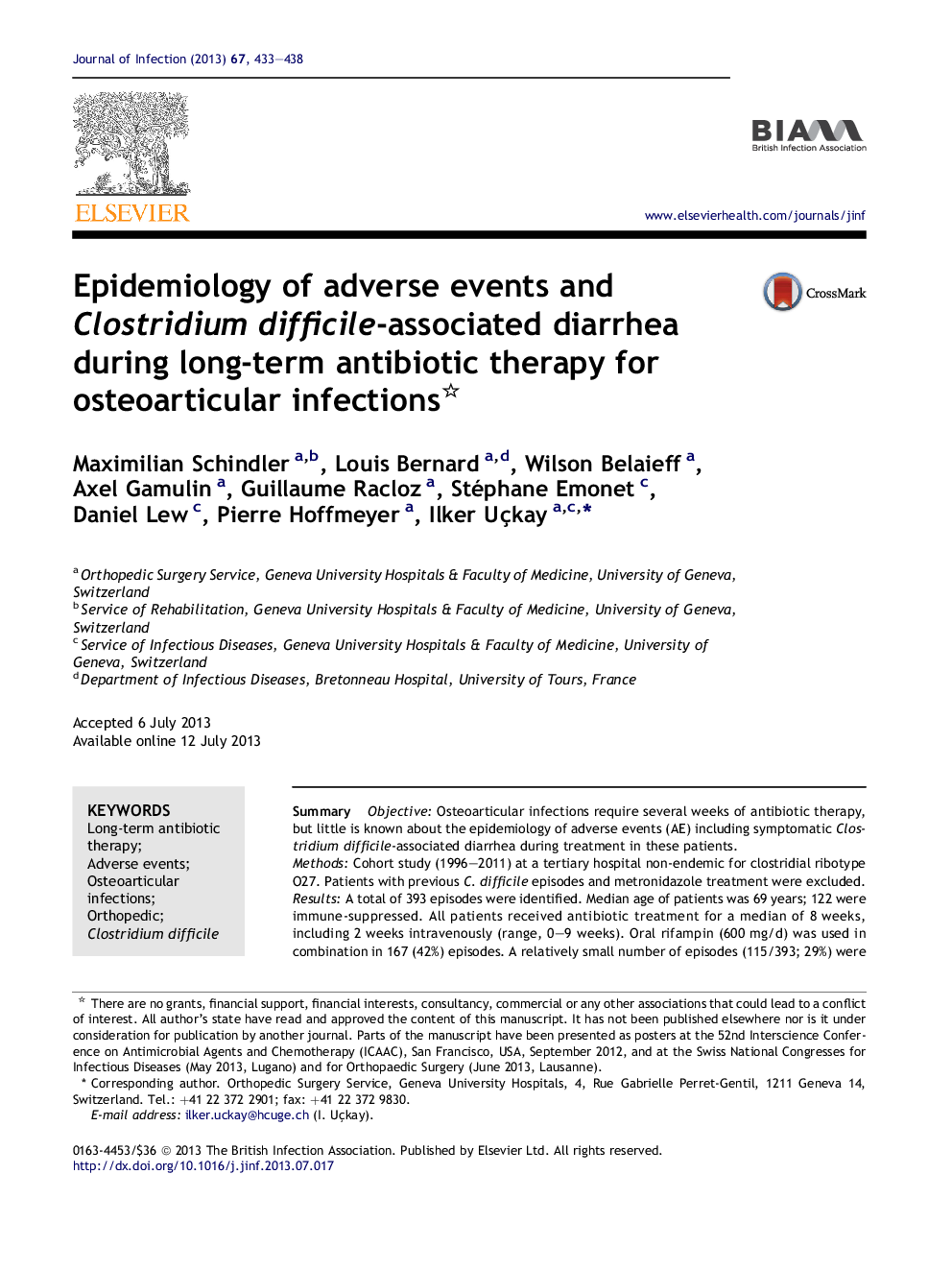| Article ID | Journal | Published Year | Pages | File Type |
|---|---|---|---|---|
| 3374649 | Journal of Infection | 2013 | 6 Pages |
SummaryObjectiveOsteoarticular infections require several weeks of antibiotic therapy, but little is known about the epidemiology of adverse events (AE) including symptomatic Clostridium difficile-associated diarrhea during treatment in these patients.MethodsCohort study (1996–2011) at a tertiary hospital non-endemic for clostridial ribotype O27. Patients with previous C. difficile episodes and metronidazole treatment were excluded.ResultsA total of 393 episodes were identified. Median age of patients was 69 years; 122 were immune-suppressed. All patients received antibiotic treatment for a median of 8 weeks, including 2 weeks intravenously (range, 0–9 weeks). Oral rifampin (600 mg/d) was used in combination in 167 (42%) episodes. A relatively small number of episodes (115/393; 29%) were complicated by AE (diarrhea, nausea, cholestasis, gastric intolerance to rifampin, rash, and mycosis), of which 41 (36%) led to treatment modification. AE occurred mainly after a median of 21 days. Fourteen patients (14/393; 3.6%) developed symptomatic C. difficile diarrhea. By multivariate Cox regression analysis, total duration of antibiotic therapy, and intravenous administration were significantly associated with AE (all p < 0.01). Regarding symptomatic C. difficile infection, rifampin (hazard ratio 0.21; 95% CI, 0.05–0.97) protected from diarrhea, but not gender or age. Hospital stay was significantly longer among patients with AE than patients without (median 78 vs. 42 d; p < 0.01).ConclusionsAE were frequent and were observed in 29% of patients treated for osteoarticular infections and prolonged the hospital stay. In contrast, diarrhea due to C. difficile was rare, while oral rifampin might act protectively against it.
